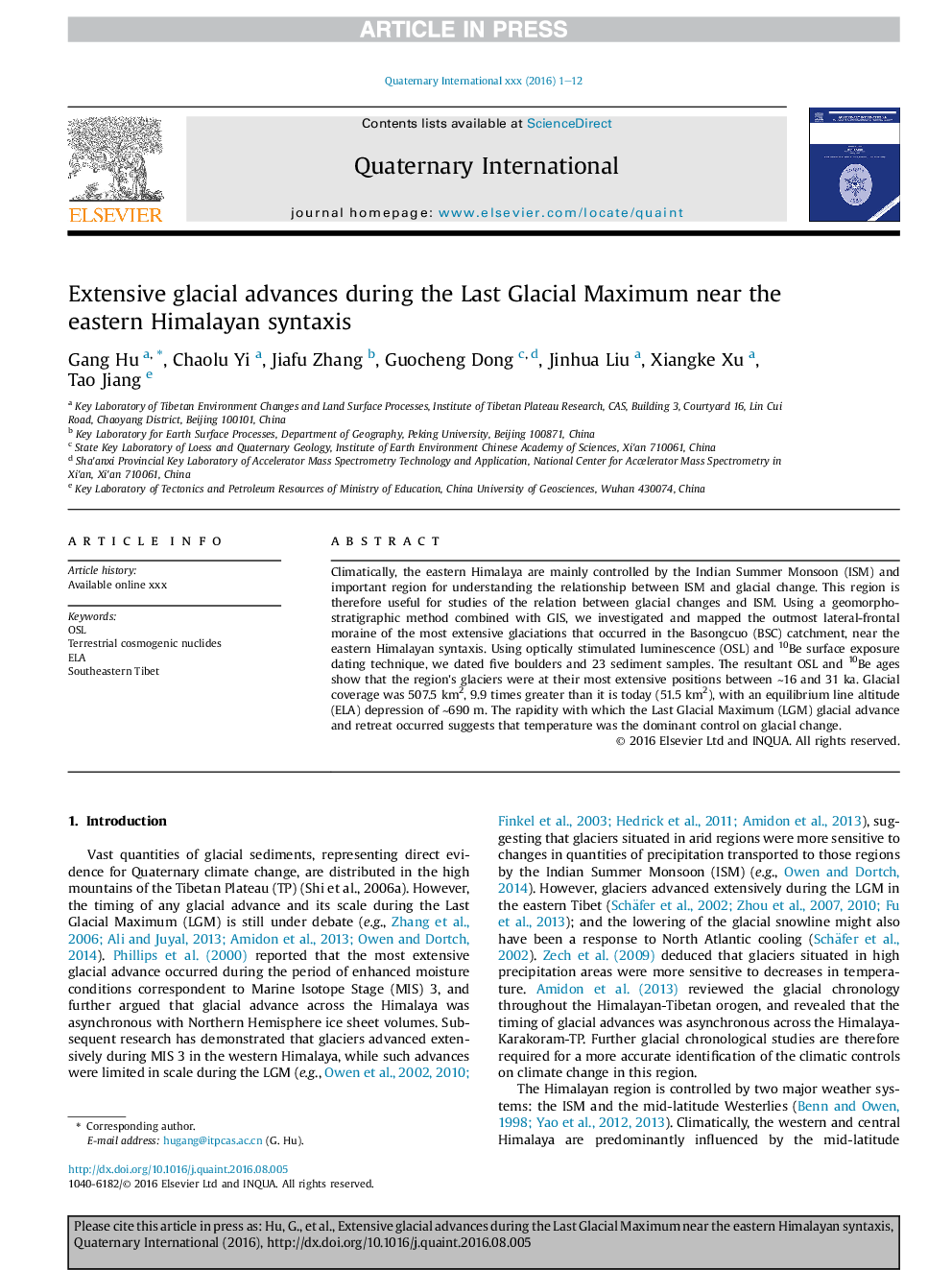| Article ID | Journal | Published Year | Pages | File Type |
|---|---|---|---|---|
| 5113122 | Quaternary International | 2017 | 12 Pages |
Abstract
Climatically, the eastern Himalaya are mainly controlled by the Indian Summer Monsoon (ISM) and important region for understanding the relationship between ISM and glacial change. This region is therefore useful for studies of the relation between glacial changes and ISM. Using a geomorpho-stratigraphic method combined with GIS, we investigated and mapped the outmost lateral-frontal moraine of the most extensive glaciations that occurred in the Basongcuo (BSC) catchment, near the eastern Himalayan syntaxis. Using optically stimulated luminescence (OSL) and 10Be surface exposure dating technique, we dated five boulders and 23 sediment samples. The resultant OSL and 10Be ages show that the region's glaciers were at their most extensive positions between â¼16 and 31 ka. Glacial coverage was 507.5Â km2, 9.9 times greater than it is today (51.5Â km2), with an equilibrium line altitude (ELA) depression of â¼690Â m. The rapidity with which the Last Glacial Maximum (LGM) glacial advance and retreat occurred suggests that temperature was the dominant control on glacial change.
Related Topics
Physical Sciences and Engineering
Earth and Planetary Sciences
Geology
Authors
Gang Hu, Chaolu Yi, Jiafu Zhang, Guocheng Dong, Jinhua Liu, Xiangke Xu, Tao Jiang,
